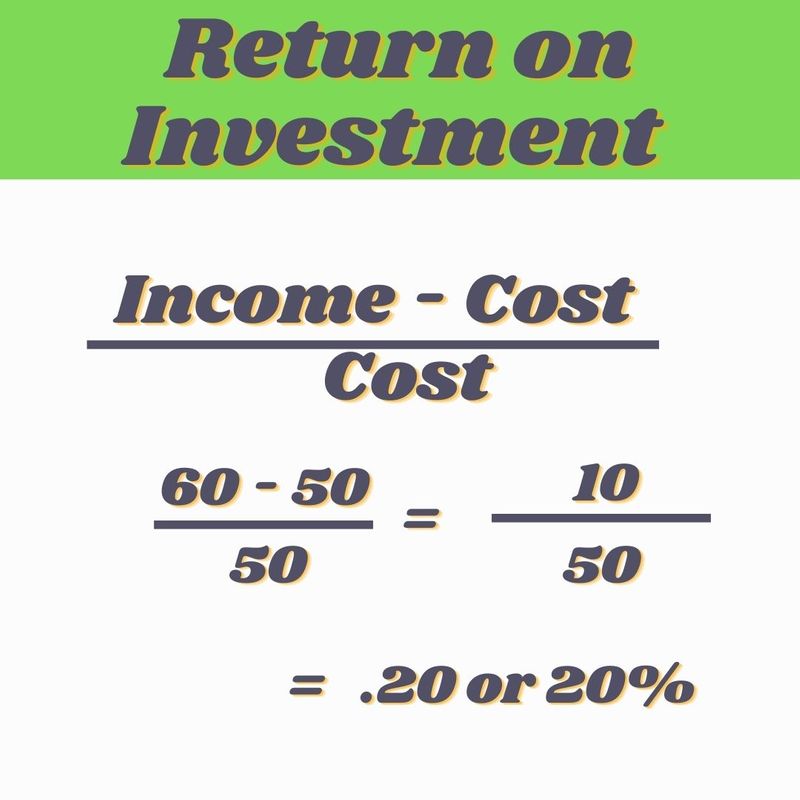Your daughter comes to you and asks for $30 to buy some toys.
Instead of giving her the money, you decide to start a business for her to make her own money. Together, you choose to run a lemonade stand for a month. You will purchase all of the products. The products cost roughly $50 and will charge $1 per drink.
After a few trial and errors during taste tasting...

By the end of the month, she made a little over $100 (including tips) and decided to give you $60. You received $60. (Your initial $50 investment and $10 of profit.)
You and your daughter benefited from the lemonade stand, but what could you have earned if it was a cupcake business?
Companies and entrepreneurs have conversations involving the advantages and disadvantages of selling different services or products.
One tool that companies use to calculate and compare possible investments is Return on Investment (ROI).
What Is Return On Investment?

ROI is simply what you get back (if anything) compared to what you put in. Based on the lemonade stand, check out this image below for the ROI formula and calculation.
You received $60 from your daughter (Income). You invested $50 in the lemonade stand business (Cost).

There are a million opportunities to invest in but there are limited time and fewer resources.
Let's say your child only made $30, and you told her to keep it.
You lost $50 and made no profit.
You may still support your child in the business, but if this happens during a business venture, such as a loss of $5,000, you may want to reconsider your options.
ROI can help you decide whether you want to continue with an investments and estimate the value of future opportunities.
Quiz
You and your daughter decide to start a cupcake business. You spend $500 and after a month of sales, she gets $300. She gives you back $100. What is your benefit?
What Does This Mean?
Now you know what ROI is and we have applied it! Yes!!
So what does it mean? It is not a dollar value.
In your lemonade stand example, your ROI was .20 or 20%. This means that for every $1 you spent, you earned an extra $.20.
Check out this video about ROI.
Your ROI value is positive, but it can also be negative. A negative situation happens when you make some income, but it is less than the cost.
For every $1 you spent, you lost X amount of dollars. You might decide to keep the investment, or you even might go for another option. There may be several factors that caused the loss, so you choose whether you want to keep the investment or not.
Quiz
Based on what was shared about ROI, which situation would be better?
Take Action
Your investment into your daughter's business paid off where you got a Return on Investment of 20%. Your daughter made $40 in profit and now can buy her toys. You decide to do the lemonade stand for another month and see how it goes.
 Photo by bruce mars on Unsplash
Photo by bruce mars on UnsplashAre you thinking about creating a business or do you already have a business?
Take the time today to find the ROI value of your current or future investments in a service or product. Then YOU decide whether it is beneficial for you.
Your feedback matters to us.
This Byte helped me better understand the topic.
